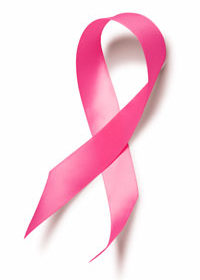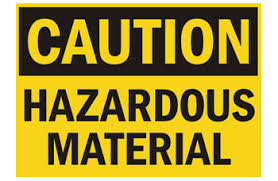Controversy surrounding a recent Gillette ad by Procter & Gamble (P&G) has led some to initiate boycotts of Gillette and Procter & Gamble products. My goal is not to focus on assessment of their ad. Rather, I would like to redirect all this attention to a serious problem that has been created by P&G, and other consumer product manufacturers. Read on to learn how to protect yourself and your family.
If you are not familiar with the background of this topic, you can read explanations on MarketWatch or Yahoo Finance. Briefly, P&G aired a commercial targeted at males to encourage the reduction of negative behaviors such as bullying and sexual assault. However their implementation backfired, as some people interpreted the ad as constituting misandry.
Since P&G’s ad made an attempt to critique or promote certain behaviors, I find it ironically disappointing that they don’t evaluate and elevate their own behaviors. Their ad implies that men should hold themselves to higher standards, while P&G does not do the same with how they formulate their products. Instead, they use a serious issue to distract (and inflame) the general public from the fact that they continue to sell products that can result in serious health problems for both males and females, but particularly for males. To what am I referring?
Exposure to many ingredients used in P&G products are biochemically feminizing men and boys, and I present evidence that this is real andproblematic. (I explain more about feminization of males below.) A large number of the products P&G produces, particularly personal care products, contain ingredients such as phthalates, parabans, triclosan, glycol ethers, tatrazine, and many others, that have been shown in peer reviewed scientific studies to feminize males (and cause other health problems too). And for many biological, developmental, and health reasons, this is an insidious tragedy.

NOTE: There are four sections to this article. If you would like to start with feminization of males, keep reading just below. If you want to skip to learn about health risks other than male feminization, go to section 2. If you want to skip to the dangerous ingredients to avoid, go to section 3. And if you want to skip to the (partial) list of P&G products to avoid, go to section 4. Realize if you skip sections or read them out of order, that there may be supporting material in a previous section that you skipped.
Biochemical feminization of males
To begin, what is meant by “feminization“? There are a number of biological changes related to male traits that can be classified as feminization. These include: lower sperm counts, lower testosterone and dihydrotestosterone (DHT), less facial and body hair, altered vocal development and function, smaller and/or malformed male reproductive anatomy (e.g. hypospadias, cryptorchidism), altered brain development and behavior when exposed as fetuses, infants or young children, reduced muscle and bone mass, slower metabolism, and the potential to develop gynecomastia (female breast tissue). This list is not all inclusive, these are just the primary changes.
The hormones testosterone and DHT, which are produced by the testes, are known as “androgens” and they are responsible for “turning on” genes that cause the development of traits that we typically think of as male. However, many of the chemicals we are exposed to in daily life interfere with the production and/or function of these hormones, as I elaborate below.
 Testosterone, the molecular version.
Testosterone, the molecular version.
So what exactly causes such feminization, and how exactly does this occur? Exposures to chemical ingredients known as “endocrine disruptors” or “xenoestrogens” (AKA “estrogenics”) are often responsible for causing these changes. “Endocrine” simply means “hormone”, and “xenoestrogens” simply mean synthetic chemicals that mimic the “female” hormone estrogen. These xenoestrogens bind to estrogen receptors in cells (both females and males have estrogen receptors), and turn on genes that are associated with female traits. In addition, due to what is known as “hormonal feedback inhibition” (negative feedback) or homeostasis, these xenoestrogens cause development of male traits to be stunted. Basically, when too much estrogen is present it shuts down production of androgenic hormones, and therefore androgenic (male) gene expression, and development of male traits.
 Estradiol.
Estradiol.
To be clear, it is normal for males to have a small amount of biologically natural estrogen, just as it is normal for females to have a small amount of testosterone. However, due to the large amount of synthetic estrogenic endocrine disrupting chemicals that we are exposed to in our modern world, males (particularly boys) are experiencing WAY too much activation (“turning on”) of their estrogen receptors and estrogenic genes.
For an example of the consequences of this, in 2017, a group of researchers from Hebrew University and Mount Sinai medical school conducted astudy on sperm counts in the US, Europe, Australia and New Zealand. They found that over the past forty years, sperm counts have fallen by over 50%. Daniel Noah Halpern writes in GQ Magazine:
“The Hebrew University/Mount Sinai paper was a meta-analysis by a team of epidemiologists, clinicians, and researchers that culled data from 185 studies, which examined semen from almost 43,000 men [emphasis added]. It showed that the human race is apparently on a trend line toward becoming unable to reproduce itself. Sperm counts went from 99 million sperm per milliliter of semen in 1973 to 47 million per milliliter in 2011, and the decline has been accelerating. Would 40 more years—or fewer—bring us all the way to zero? ”

They are not the only scientists who have noticed this trend. The US National Institute of Health (NIH) has also commented on this trend. And declining sperm counts are not the only sign of this problem. Medical statistics from the Centers for Disease Control and Prevention (CDC) show that the incidences of hypospadias, cryptorchidism, and low testosterone have all been on the rise for 30 years. For example, these three data sets: rates of hypospadias have increased markedly over the past 25 to 30 years, Cryptorchidism: Incidence, Risk Factors, and Potential Role of Environment, and 1 in 4 Men (25%) Over Age 30 Have Low Testosterone. So male reproductive health in developed countries (including the US) certainly seems in jeopardy.
Health risks other than male feminization
It is also worth pointing out that xenoestrogenic chemicals are also likely substantial contributors to several other health problems including:

Early puberty in girls
Here is a study that shows that estrogen-like endocrine disrupting chemicals affect puberty in humans. But it’s not just one study, there are many.A different study analyzing Isolated premature thelarche (IPT) – which is abnormally early development of breasts or breast tissue, without other signs of early puberty – found that out of the 33 girls in the study, the 9 girls with exposure to Endocrine Disrupting Chemicals (EDCs) had much higher estrogenic bioactivity. This is strong evidence in itself of what these EDC chemicals are doing in human bodies. In this study they are behaving substantially like estrogens, and at least in girls, seem to be selectively affecting breast tissue. Separate studies have demonstrated that early breast development is a medical risk factor for breast cancer later in life.
Lastly, here is a study indicating that the affects of the xenoestrogen Bisphenal A (BPA) may be an etiologic factor in girls with precocious puberty(ICPP). While not commonly used in personal care products, BPA is used in many consumer products (usually plastic or rubber), including the majority of cash register receipts printed on thermal paper (such as found in grocery stores), and in many canned foods such as soups. It is also used in many types of packaging. Because BPA is not used in personal care products I am not going to focus on BPA in this article. However bisphenal compounds are dangerous and problematic in numerous ways, so they deserve to be mentioned, and elaborated upon in the future.
In the interest of preventing early onset puberty, parents should help their daughters avoid chemicals that likely promote the problem.

Don’t be fooled by companies engaging in pink washing. See this P&G example.
Pink Washing Definition: “The term ‘pinkwashing’ is associated with companies that use the pink ribbon symbol or use the support of breast cancer charities as a marketing technique, to promote one of their products, while at the same time [their] manufactured products have proven to contain ingredients that are linked to the disease developed…”
Breast cancer in women
It is no surprise that breast cancer in women would follow early puberty in girls, as both conditions have been scientifically linked to exposure to these types of endocrine disrupting chemicals. For instance, this next study points out that most of the known risk factors for breast cancer are related to cumulative lifetime exposure to estrogens, and that includes xenoestrogens.
Here is a research study that provides in vitro evidence that xenoestrogens such as phthalates and BPA are able to induce neoplastic (cancerous) transformation in human breast epithelial cells. This in vitro study found that various types of parabens stimulated or increased estrogenic gene expression in breast cancer cells. This is quite concerning from the perspective of breast cancer progression. Notice that this research isn’t new; that study was done back in 2009. Ten years later P&G is still using many of the same chemicals in their products.
There is little evidence of any effort being made to remove such ingredients. Companies use these types of ingredients because petrochemicals are cheap, and they can produce the desired result. I guess it’s more profitable to keep these ingredients in the products than to try to reformulate to something non-toxic. And when one of these dangerous chemicals is actually removed from products, it is often replaced with another petrochemical for which no data exists regarding its safety. It’s like a game of “whac-a-mole”, except when you lose you get to be a human guinea pig.

Do you know what the typical excuse is for the use of these chemicals? “We use such small amounts that they can’t possibly have an affect on the body.” Well, they’re lying, and here’s more evidence to show they are lying. This study discusses the combined involvement of dietary, household and cosmetic xenoestrogens. It states: “chemicals can give oestrogenic responses at lower concentrations, which suggests that in the breast, low doses of many compounds could sum to give a significant oestrogenic stimulus [emphasis added]”.
Other studies have shown that on average, women use 12 products containing 168 unique ingredients every day. So these “small amounts” can certainly add up. And there is clear evidence that these compounds are accumulating in humans. One of the key problems with assessment of these chemical exposures is this: while any one of these exposures may not be catastrophic, the evidence points to the reality that thecumulative effect absolutely is. The problem is, the safety/toxicology research rarely looks at either cumulative load, or potential interactions between compounds (partly because there are too many).
Refocusing on the topic of breast cancer, here is a research study that evaluated different parabens, and concluded that parabens can be viewed as potential contributors to breast cancer progression.
Again, this isn’t just one research study. There is so much research evidence that it is becoming overwhelming. For instance, here is an in vitro study that showed that in vitro parabens can influence not only proliferation but also migratory and invasive properties of human breast cancer cells. Further, this next study from 2004 discusses the increased risk among African Americans at all ages, as they use twice as many Personal Care Products (PCPs). The authors of this study hypothesized that the use of estrogen and other hormone-containing PCPs in young African American women accounts, in part, for their increased risk of breast cancer prior to menopause.
Other chemicals (not discussed in this article) found in hair dyes may increase the odds developing breast cancer by 23%.
Given the evidence, women concerned with breast cancer should certainly limit their exposure to suspect chemical ingredients.
 A light blue ribbon is the symbol for prostate health month.
A light blue ribbon is the symbol for prostate health month.
Benign Prostate Hyperplasia (BPH) and prostate cancer in men
Not worried about breast cancer because you’re male? Not so fast. Here is a very good review paper that considers the evidence from epidemiological studies and animal studies that endocrine disrupting compounds, including sunscreen chemicals and bisphenol A (BPA), may influence the development or progression of prostate cancer.
The paper also points out that 50% of men experience benign prostate hyperplasia (BPH) by the age of 60. In my opinion, this result is not “normal” and speaks to a more widespread systemic causal role for estrogenic compounds. The paper cites several studies (Prins & Korach 2008, Raghow et al. 2002, Steiner & Pound 2003) that point out that “the use of anti-estrogens has been recently recognized to have a therapeutic role in prostate cancer management.” Ya think? If estrogen itself, and xenoestrogenic chemicals, can contribute to both Benign Prostate Hyperplasia (BPH) and prostate cancer in men, using anti-estrogenic drugs in treatment only makes sense. So next time your doctor tells you that “every man gets BPH or prostate cancer eventually”, you can tell your doctor, “yeah, only because of the lifetime exposure to EDCs and xenoestrogens in which we are all being immersed.”
Further, the author writes “It is noteworthy that relative to adult estrogenic responses, the prostate gland is particularly sensitive to estrogen exposures during the critical developmental period.” And this ties in with the information I am presenting here, which is that xenoestrogenic exposure in fetuses and infants can have lifelong consequences for males.
On a related topic, here is a research study that demonstrated for the first time (at that time – 2011) that estrogens initiate and promote prostatic carcinogenesis in an androgen-supported environment.
This review paper examines the evidence for a role of estrogens and specific estrogen receptors in prostate growth, differentiation and disease states including prostatitis, benign prostatic hyperplasia (BPH) and prostate cancer.
Another study concluded that environmental exposure to low dose of BPA may induce prostate cells to proliferate and aggravate testosterone-induced benign prostate hyperplasia in rats.
Here is a study that shows fetal exposure to low doses of methoxychlor and other xenoestrogens increases adult prostate size in mice. This is fetal exposure, as in, when the fetus that is still in the mother’s womb. So women take note: you can determine if you son will likely have prostate problems by your (lack of) chemical exposures while you are pregnant. This demonstrates the importance of not exposing the unborn child while still in the womb – and you do that by not exposing yourself.

Finally on the topic of prostate issues, this study provides evidence that endocrine disrupting chemicals may reprogram prostate stem cells, thus potentially making them more likely to become cancerous.
These chemicals are dangerous, easily get into young bodies, and have lifelong effects.
There is a great deal more that could be written about the role of endocrine disrupters in prostate and breast pathologies, but I want to focus this article on male developmental and reproductive risks and how people can protect themselves.

So What Are These Nasty Ingredients And How Does One Avoid Them?
Now that we have some of the basic physiology established, what are the specific ingredients that P&G (and other companies) use that can lead to such physiological feminization in males? Glad you asked. Here are some of the ingredients (not all of them, 6+ specifically) that P&G uses in their products that have estrogenic affects and/or endocrine disrupting effects. While there are literally thousands of ingredients out there, the ones listed below are the ones that are habitually found in products, and are already backed by science as to their dangers. Each ingredient has peer reviewed scientific research listed after it that strongly supports that it leads to feminization of males. There are literally hundreds of studies showing that these chemicals are problematic, for both males and females, but particularly younger males. So if you are the mother of a young boy, pregnant, or plan to become pregnant, these concerns also apply to you every bit as much as to every man out there. Again, the studies below are only a sampling of all the studies that can be found.
It’s safe to say that if you find any of these ingredients in the products you use, they will adversely affect your health, and your manliness (if you are a male), or will adversely affect the males in your life (if you are a female).
 Generic phthalate structure.
Generic phthalate structure.
1. Phthalates – found in ingredients listed as “fragrance or perfume”
Phthalates are used pervasively in personal care products. Some of the most common products that contain them are nail polish, almost all “fragrances”, and hair colorants. However, it is very important to be aware that phthalates (pronounced thal-ates) almost never show up on an ingredient label directly. They are typically included as part of any ingredient listed as “fragrance”, “perfume”, or “parfum”. Manufacturers can get away with this because “fragrances” are considered by the FDA to be trade secrets, so companies don’t have to list what is actually in them.
This problem also applies to the vast majority of perfumes and colognes on the market in the US, so you are taking a big health risk using any of those products. (Or imagine you get stuck in an elevator with someone who loves to douse themselves with “perfume”, which is not all that different from being stuck in an elevator with someone smoking.) So unless a manufacturer fully discloses what is in their “fragrance” we have to assume the worst – that it does contain harmful chemicals, particularly phthalates. And it is safe to say that if you see “fragrance” on the label, then that is a trade secret that belongs to the company who has no intention of ever telling you which of the thousands of chemicals it contains.

Researchers at the Environmental Working Group (EWG) were possibly the first to figure this out, by having labs conduct chemical analysis of numerous types of personal care products and cosmetics. They used analytical methods such as gas chromatography-mass spectrometry (GC-MS) to determine what was actually in these products, including phthalate content.The EWG has found phthalates in literally over a thousand personal care (and other) products that do not actually list them on the ingredients label, other than as “fragrance”.

When the staff at EWG realized that these health harming chemicals were being hidden they begin exposing the truth by writing articles such as this one about how 3,163 ingredients hide behind the word “fragrance”. So that one word found on your ingredients list, can have up to 3,163 different ingredients or a combination of them, and the manufacturers don’t have to tell you about them.
The word “Fragrance” implies something that smells nice, and doesn’t adequately warn consumers about what might be hiding inside. Here’s a great explanation of what “fragrance” really means – it should really be called “hidden chemicals”. What “fragrance” really consists of is phthalates mixed with other chemicals, and it should be referred to as such. Because then people wouldn’t be duped into buying products that they think are safe, as the risk would be more obvious.
Phthalates are used in personal care products, perfume, and cologne, because they help to either enhance or “lock in” the scents produced by other chemicals. Incidentally, the most common chemicals to be used with phthalates are a class known as synthetic musks. Ironically, two of these synthetic musks (AHTN and HHCB) are anti-estrogenic, which could theoretically be good for adult men, but very bad for developing girls, and not so good for adult women either.
Oh, and by the way, these synthetic musks are found in public drinking water. In reality, it is likely most of the chemicals discussed here arealready in public drinking water from people washing off their perfumes and personal care products. So filter your water!
Back to phthalates: phthalates are horrible for human health. EWG also has a great article on these industrial plasticers and their effect on males specifically. Finally here is a nice cheat sheet of where you can find these chemicals. They’re everywhere, from nail polish to paint. Furthermore, here are results from Health Canada that support the EWG’s findings: Phthalates in cosmetic and personal care products: Concentrations and possible dermal exposure.
Below are some scientific studies on the reproductive effects of phthalate exposure. Based on these studies there is no doubt that phthalates feminize males.
The title of this study could speak for itself: Testicular Atrophy Produced by Phthalate Esters. However, the slightly longer explanation is warranted. This was a study conducted on male rats. The researchers found that most of the harm was done to young male rats, rather than adults.
This next study requires a bit more explanation. Previous experimental studies performed by exposing female rats to phthalates while pregnant, resulted in a reduced “anogenital distance” (AGD) (which is a measure of exactly what it sounds like) of the male rat pups, compared to male rat pups not exposed to phthalates in utero. AGD is a common measure of sexual differentiation between male and female infants in many animal species (including humans). Basically the greater the AGD the more “male” the infant is, and a smaller AGD indicates a more feminized infant. This study below was an epidemiological study that evaluated the AGD of human male infants, and the researchers also took samples of prenatal urine samples. The researchers analyzed the urine samples for phthalate load, and then correlated the urine phthalate load data with the infants’ AGD. The researchers found a very strong correlation between elevated prenatal phthalate exposure and human male infant feminization – just like the previous rat studies had shown. The male infants with elevated prenatal phthalate exposure had stunted male reproductive development.

The following study was a follow up performed by the lead scientist of the study above: Prenatal Phthalate Exposure and Anogenital Distance in Male Infants. This study correlated incomplete testicular descent to reduced AGD and phthalate exposure from the previous study. This study also corrected their methodology to use Anogenital Index, which is AGD divided by body weight. This is a more accurate measure of feminization.
The lead researcher of these two studies is Dr. Shanna Swan. She has since had her work highly criticized by the chemical industry, and has been ostracized by some of her scientific peers (who likely get funding from chemical companies), despite the fact that her research was conducted using mostly sound methodologies. Some of the criticism is valid due to relatively minor errors in her statistical methodology. However the criticisms are grossly exaggerated, and the errors in methodology do not change the crux of her results.
Now, let’s think about this. If a scientist who has no vested financial (or other) interest completes a study, using largely sound methodologies, that is repeatable, and the results happen to show that certain common chemicals cause serious problems, then shouldn’t the companies who produce and use those chemicals change their actions appropriately? Perhaps stop producing and using them, at least in ways that put people at risk? Or issue public warnings? Well, that would be common (moral) sense, and common sense is not common. That would cost them too much money. So instead, they engage in character assassination of scientists to discredit them, in an effort to fool the public into continuing to buy their toxic products. They produce inflammatory commercials rather than reformulating their products for safety. These are the types of people we are dealing with.
This study: Estimated Daily Phthalate Exposures in a Population of Mothers of Male Infants Exhibiting Reduced Anogenital Distance, tries to answer the question: “how much phthalate exposure did the women have who birthed male infants with reduced AGD?” In other words, “how much exposure is necessary to cause these types of problems?” Their answer is fairly complex, so I’m not going to try to summarize it. However I thought the following quotes were enlightening:
“There are multiple possible routes of exposure to phthalates, including dermal (Duty et al. 2005), ingestion (Clark et al. 2003), and inhalation (Adibi et al. 2003). Furthermore, phthalate diesters and their metabolites are cleared from the body within a few days, with the bulk of the dose cleared within the first 24 hr (Anderson et al. 2001; Koch et al. 2005). There were relatively few nondetects in the population, indicating that exposures of the levels observed in this study reflect relatively continuous daily exposures [emphasis added].”
“The median estimated exposures for DBP and BBzP [certain specific phthalates] in the Swan et al. (2005) [the study on AGD mentioned previously] study population are on the order of 1 μg/kg/day, and for DEP are on the order of 6 μg/kg/day. Current U.S. EPA RfDs [Reference dose – EPA maximal acceptable limits] are 100 μg/kg/day (DBP), 200 μg/kg/day (BBzP), and 800 μg/kg/day (DEP), which are all more than 100 times greater than the median exposures in the Swan et al. (2005) population.” !!!
In other words, the current EPA maximal allowable limits for phthalates are between 100 and 200 times higher than the exposure level necessary to produce human male infants with stunted reproductive development.
It is worth pointing out that many of these cited studies were published between 2000 and 2006. So the risk of phthalates has been known for some time. Yet it is not clear that much has been done to improve the situation, either by producing companies, or by regulatory agencies.

The following study shows that phthalates from breast milk also have an affect on infants at three months of age, so you’re not safe once your baby is born either.
This review paper going back to 2006 shows that the effects from phalate exposurre initially found in rodents, were also found in human male infants when exposed perinatally. Specifically: stunted testicular development, lower androgenic hormone levels, reduced Leydig cell function, increased sex hormone binding globulin (SHBG), reduced AGD, cryptorchidism, and small genital size. (I highly recommend reading this review paper if you want to understand the topic in greater depth; it is readable by a non-scientist.)
Since many of the studies listed in this article are animal studies, I think it is worth making an important side point. I occasionally hear people make the argument that animal models don’t necessarily translate to effects in humans. While that sometimes can be true, it is quite rare. I know this from professional experience working in pharmaceutical toxicology research. Pharmaceutical companies don’t spend billions of dollars on mouse and rat studies to produce useless data. The FDA would not require billions be spent for this purpose if the data was meaningless. Animal models, particularly rodent and obviously primate studies, are very predictive of effects in humans. So anyone who makes the argument that mouse or rat data does not apply to humans is either an ignorant fool, or a con artist. And remember, “con” is short for “confidence”. Do you have CONfidence in the companies who produce and use these ingredients?
So don’t let anyone tell you that animal studies are not indicative of how the human body would react. It’s just that it would be unethical to test on humans intentionally, so studies are done on animals. (Wait, isn’t testing on humans kind of what these manufacturer’s are doing? Just without published results?) Unfortunately while the scientific community puts the information out there, often for free, the manufacturers ignore it over and over, and often try to cover it up instead.
Below are several additional studies on phthalate exposure performed on rats, some of which date back to the 1980s! I won’t write summaries for each of these studies, other than to say that these provide a lot of animal model data that supports scientific understanding of what phthalates do to male animals. They also provide background context and clues for the epidemiological studies on humans.
The morphological development of di‐n‐pentyl phthalate induced testicular atrophy in the rat.
Testicular toxicity of di-(2-ethylhexyl)phthalate in young Sprague–Dawley rats
Effects of phthalate esters on the developing reproductive tract of male rats
The data is there: phtalate use results in the feminization of males, and people are unknowingly exposing themselves to these on a regular basis for the sake of smelling good. Because that’s what marketing tells you is the only way to do things. We have to change this state of affairs.
 Paraben.
Paraben.
2. Parabens were once much more heavily used in personal care products. Public outcry has succeeded in getting manufacturers to voluntarily reduce the frequency of their use, but you can still find parabens in a number of products. So while the public speaking out, and changing their buying habits, has been successful in getting the companies to reformulate, unfortunately, these ingredients are still found in products, often hidden under fancy new names. This is done by combining a number of these compounds with other compounds and renaming them, so as to fool you into thinking that parabens are not in the product, when indeed they are. There are too many to name them here, so be alert for ingredients that you’ve never heard of before. Regardless of the name, parabens still put your health and manliness at risk whenever they are used in consumer products.
For instance, this study showed that sperm quantity decreased based on exposure to propyl paraben. Another study showed that that butyl paraben can exert an adverse effect on the male reproductive system at doses that are well below those of the accepted daily intake (ADI) in Japan. Yes, these chemicals are also found in your food, not just personal care products. You eat them and don’t even know it.
There are actually several different slight variations on parabens: methylparaben, ethylparaben, propylparaben, and butylparaben. And all of them have been shown to be (xeno)estrogenic in both in vitro studies and in animal models.
Parabens have primarly been used in skin care products for their antibacterial properties. However it is quite concerning that in rat studies, butylparaben in particular has been shown to produce similar effects to phthalates in male offspring. This includes: reduced anogenital distance, smaller testes, lower testosterone levels, and lower sperm counts.
One of the additional reasons parabens have been used in many skin care products is because they can in some cases improve skin appearance. However research suggests that they only have this effect as a result of their estrogenicity.
One review paper suggests that the mechanism of action of parabens on males is due to disrupting mitochondrial function in the testes. Mitochondria are the “power plants” of cells, and “the present review discusses evidence that parabens may not be as safe as initially thought, and suggests that the interaction between parabens and mitochondrial function in the testis may be key in explaining the contribution of parabens for a decrease in reproductive potential.”
One structure-activity relationship study of several endocrine disrupting chemicals (including parabens, bisphenols, and triclosan) found thatparabens can also activate glucocorticoid receptors. Glucocorticoids are another class of steroid hormones produced by adrenal glands and are involved in regulating blood sugar, inflammation and the immune system. So these endocrine disrupting chemicals can interfere with more than just one hormonal system. This same study found that triclosan produces anti-androgenic effects. I will cover triclosan in a separate section below.
Finally, bringing this back to risk in cosmetics and personal care products, this last study found that parabens as well as the sunscreen active ingredient homosalate are all estrogenic in a number of different cell lines.
There were quite few more studies on the endocrine disrupting properties of parabens. This article is not meant to be all inclusive. But once again, there is ample data to conclude that parabens are harming reproductive health of humans, particularly males.

Triclosan.
3. Triclosan – In case you don’t recall, triclosan was used in antimicrobial soaps for many years, and corporations and the FDA insisted for years that it was safe. That was, until the FDA decision makers finally changed their minds. So it seems to have been pulled from most, but not yet all products at the time of this writing. Unfortunately it was not pulled due to safety concerns, but efficacy issues. It is no longer considered GRASE (Generally Recognized Safe and Effective) as an Over The Counter (OTC) health product. While the decision to remove triclosan from the market has been made, the FDA has allowed manufacturers to sell off the rest of their remaining inventory (to prevent financial harm to the manufacturers). So you may still find this ingredient in products. However, Antibacterial Soap? You Can Skip It, Use Plain Soap and Water.
This is an important lesson: organizations like the EWG and Nature’s Complement point out the harm of many of these chemicals far in advance. The FDA and the major corporations deny the harm, at least until they get around to reformulating their products (IF they reformulate). Then they quietly pull the ingredient from the market hoping no one notices they’ve been poisoning their customers the whole time. The companies probably also think the public is not scientifically literate enough to figure out that their health is being put at risk. So these companies have little interest in your health, other than not being able to be sued.
As mentioned previously there is evidence to show that triclosan blocks the activity of androgens such as testosterone and DHT at the androgen receptor. Triclosan has also been shown to reduce levels of enzymes involved in production of testosterone, as well as the hormones Luteinizing hormone (LH) which is involved in androgen production, and Follicle-stimulating hormone (FSH), which is involved in the production of sperm.
This in vitro study shows that triclosan can both inhibit androgen receptor gene expression, and also stimulate the growth of preexisting breast cancer cells.
A different in vitro study found that triclosan inhibited both androgen and estrogen receptors. So while the mechanism of action of triclosan may be complex, it is safe to say that it is likely disrupting sex hormone function in both men and women.
However the hormone disrupting effects of triclosan are not limited to sex hormones. This epidemiological study found a strong relationship between elevated levels of triclosan in people’s urine, and reduced levels of thyroid hormones.
Finally, this review paper provides a good summary of research into the endocrine disrupting properties of triclosan. The paper admits that some of the data is conflicting, but that there is enough evidence to conclude that triclosan is indeed disrupting human endocrine function.
 Phenoxyethanol, a glycol ether.
Phenoxyethanol, a glycol ether.
4+. Glycol ethers (which include ethylene glycol, phenoxyethanol, and propylene glycol, among others)
Glycol ethers span a variety of compounds and uses ranging from antifreeze to food additives to preservatives.
It is often argued that propylene glycol specifically is safe because it has GRAS (Generally Regarded As Safe) status by the FDA. But as we haveexplained previously (a few paragraphs down in the link), decisions on GRAS status have as much to do with politics as science. This type of faulty argument is also know as “appealing to authority“. While propylene glycol may be much less of a concern than the other glycol ethers, I am not yet convinced that propylene glycol is fully safe as claimed. For example rat studies (here and here) have found that elevated exposure to propylene glycol can result in increased liver weights as well as central nervous system depression. However my focus here is on other glycol ethers rather than propylene glycol.
Here is a large epidemiological study (2118 participants) that found that after properly controlling for other variables, men who had occupational exposure to glycol ethers had a substantially lower sperm counts than men who did not work with glycol ethers.
Another epidemiological study evaluating the effects of the glycol ethers 2‐ethoxyethanol (2‐EE) and 2‐methoxyethanol (2‐ME) also found an increased prevalence of oligospermia and azoospermia (low sperm counts). It is true that these particular glycol ethers are not commonly used in personal care products, although they are used in other consumer products.
However what this research above makes me question is, what does this say about the effects of other glycol ethers? In particular I wonder if the glycol ether phenoxyethanol, which IS regularly used in personal care products and has a similar chemical structure, produces similar effects in males. As of this writing, I could not find research to address this question. Like many of these chemicals, the toxicological impact is treated as a low priority concern. However I was able to find evidence that phenoxyethanol is absorbed through human skin.
Here is a review paper that summarizes some of the reproductive toxicology data of glycol ethers and speculates about potential mechanisms of action.
A case-control study provides more evidence about the reproductive harm of ethylene glycol in men.
Finally, animal models such as this rat study show that exposing pregnant females to glycol ethers affect male offspring. In this case it reduced testicular weight compared to controls. Some might argue that the inhalation study method might not apply in the real world. But it certainly seems to me like it could apply – if a person were say for example, painting their house with paints containing glycol ethers, or breathing them in all day long because they are contained in personal care products they put on their body.
 Oxybenzone, a common sunscreen active ingredient.
Oxybenzone, a common sunscreen active ingredient.
5+. Sunscreen ingredients: avobenzone, octocrylene, homosolate, and oxybenzone
These ingredients can be found in a wide variety of products that advertise sun protection. Watch out for them on labels, as they will be specifically mentioned. I have written an entire separate article on the safety of sunscreens, so with this section I will try to provide a brief synopsis.
Like the other ingredients mentioned in this article, these four sunscreen active ingredients also have adverse affects on male reproductive health. Some of them are also estrogenic.
Avobenzone, which is perhaps the most common non-mineral “UV filter” sunscreen, has shown anti-androgen activity in in vitro studies. So yet more evidence that endocrine disrupting chemicals are likely effecting male reproductive health.
Animal models have shown that octocrylene has both antiandrogenic and antiestrogenic activity. So in this case we are seeing chemicals that disrupt normal sex hormone function in both sexes.
Other animal models have shown that homosolate and several other “UV filter” sunscreens are antogonists of the androgen receptor, meaning they block the action of androgens. In addition, two of the tested musks in this study were antagonists of the estrogen receptor, and two others blocked both the androgen and estrogen receptors.
Oxybenzone has been shown to be both estrogenic and harm reproductive health in both sexes, again in animal models.
Bringing this topic back to human data, the EWG provides a good summary of problems with sunscreens in their article The Trouble With Ingredients in Sunscreens. In particular I want to point out this description: “In a recent evaluation of CDC-collected exposure data for American children, researchers found that adolescent boys with higher oxybenzone measurements had significantly lower total testosterone levels (Scinicariello 2016).”
Here is the actual CDC study referenced by the EWG article. It is titled Serum Testosterone Concentrations and Urinary Bisphenol A, Benzophenone-3, Triclosan, and Paraben Levels in Male and Female Children and Adolescents: NHANES 2011-2012. I want to point out just one brief quote from the study before moving on to the next topic: “BP-3 [benzophenone-3] and BPA were associated with significantly lower TT [total testosterone] in male adolescents, and BPA was associated with significantly higher TT in female adolescents.” So in adolescents, these EDCs are turning boys into eunuchs, and girls into boys. It makes me wonder if such chemically mediated effects have any correlation to the growing number of people with “gender dysphoria“.
 Tartrazine, AKA “FD&C yellow 5”.
Tartrazine, AKA “FD&C yellow 5”.
6. Tartrazine, also known as FD&C Yellow 5. (Not to be confused with atrazine, which is a pesticide that causes serious sexual side effects in male frogs and often ends up in public drinking water. A topic worthy of a separate article on agrochemicals and reproductive health). Anyway, tartrazine is a colorant, and while this colorant is used in personal care products, it is one of the most widely used food colorants. Check the labels of all the processed or packaged foods in your home and I bet you will find it. It is also used as a pharmaceutical colorant.
Based on the research I would suggest you neither want to ingest it nor put it on your body in personal care products. From what I could find, this compound has less data available than the others mentioned, but that does not make the data that is available any less concerning.
For example, a mouse study found that feeding tartrazine for 30 days led to several adverse outcomes compared to controls: reduced weight of testes, lower sperm counts, sperm abnormalities, and a significant increase in body weight . Given that the scientific data is available, I find it both comical and aggravating that the Wikipedia page dismisses this as “myth”. I suppose the authors of the Wikipedia article didn’t do a very good job of actually looking at the research (checking on Snopes does not even remotely qualify as “research”).
On a related topic, I read one statement from a chemical industry representative that tried to make the argument that if tartrazine had adverse effects on male reproductive health we would know it by now because it has been used for so long, therefore it must be safe. This is also a fallacious argumentbased on a false premise leading to a “sillygism”. If you are not familiar with the concept, a sillygism is a sequence of statements that superficially appear logical like a syllogism, but which produce a nonsensical conclusion. Given the data presented earlier showing that male reproductive health absolutely has been on a downward spiral for at least forty to fifty years, I would say this argument is indeed based on a false premise. Back to some animal studies…
A different study testing tartrazine in mice did not find changes in testes weight or body weight, but did confirm the findings regarding reduced sperm count and abnormalities of sperm motility and histology.
An in vitro study on tartrazine provides a potential explanation for a mechanism for action for the animal studies. This study found that tartrazine is a potent xenoestrogen, even at quite small concentrations.
Another potential explanation for the animal studies comes from this in vitro study. Rats administered tartrazine showed lower levels of antioxidant enzymes in their testis, which the authors speculate is due to tartrazine producing Reactive Oxygen Species (ROS) (free radicals). Regardless of the mechanism, reduced levels of antioxidanat enzymes in testis would likely lead to greater oxidative damage.
Aside from reproductive toxicity, this rat study found that tartrazine adversely affected several markers of liver and kidney function, including ALT, AST, ALP, urea, creatinine, total protein, and albumin, among others.
An additional study on rats also confirmed that tartrazine adversely affects both liver function, and morphology (histopathology).
In vitro studies have shown that tartrazine may potentially be genotoxic, but this has not yet been demonstrated in animal models that I could find.
Finally on the topic of tartrazine, I would say that hopefully more data becomes available specifically regarding its potential for reproductive toxicity. From the data I could find there is certainly reason for concern, but it is arguably not sufficient, at least not to regulatory agencies. But since regulatory agencies are years behind the research, it is probably best that the rest of us avoid it anyway.

Finally which P&G products contain these ingredients?
Now we are really getting to the nitty gritty of why I decided to bring this information forward, and bringing this topic full circle. The P&G products below contain one or more of the ingredients mentioned above. This information was taken directly from ingredient labels on various P&G websites.
To be fair, P&G is not the only company that uses these harmful ingredients, since use of these ingredients is pervasive in the industry. But this is about P&G and their hypocrisy, as they’re trying to tell others how to behave, when they should evaluate their own actions first. So I am going to call out several (not all, as there are too many) P&G products by name that are problematic.
While reading these you might also want to open in new browser tabs our articles on some of the other ingredients you might not want in your products. Part 1, and Part 2.
GilletteTM Body Washes and deodorants: contain “fragrance/parfum” – in other words they contain phthalates. It is also worth pointing out that these also contain sodium laureth sulfate and sodium lauryl sulfate, which we point out (about 2/3 down the page in the link) that these chemicals make the skin more permeable and allow more of other chemicals (like phthalates) to enter your body.
https://gillette.com/en-us/products/deodorant-and-body-wash/body-wash/odor-shield
https://gillette.com/en-us/products/deodorant-and-body-wash/deodorant/clear-gel-cool-wave

Old SpiceTM aftershaves and shampoos contain phthalates, and their shampoo also contains methylchloroisothiazolinone and methylisothiazolinone which are known skin irritants. Finally, the shampoo contains sodium benzoate. Sodium benzoate can turn into the carcinogen benzene in the presence of citric acid (and other acids like ascorbic acid). It is unfortunate then that Old Spice formulators didn’t notice that they use both sodium benzoate and citric acid in their shampoo formula. D’oh!
How ironic they call it “stronger swagger” when it likely kills your swagger.
https://oldspice.com/en/content/stronger-swagger-anti-dandruff-shampoo-conditioner
https://oldspice.com/en/content/classic-after-shave
Herbal EssenceTM shampoos contain parabens. I find it sickly humorous that this company division markets itself as being sooo natural. But the list of all the ingredients they use in their products is very informative as to how hypocritical they are regarding their extensive use of synthetic chemicals – several with questionable health effects.
https://herbalessences.com/en-us/ingredients-glossary
Many DownyTM products contain phthalates.
TideTM laundry detergent contains phthalates, as well as glycol ethers.
https://tide.com/en-us/about-tide/innovation/detergent-ingredients

DawnTM dish detergent contains phthalates, glycol ethers, and tartrazine. And remember, you put dish detergent on your dishes, and it is possible not all of it gets rinsed off. Then you EAT off of your dishes. How much of these residual chemicals are you ingesting with your food?
https://www.pg.com/productsafety/ingredients/Ultra_Dawn_Original.pdf
JoyTM dish detergent contains phthalates, glycol ethers, tartrazine, and may or may not contain triclosan. And again, realize that you are probably eating some of these.
Without triclosan:
https://www.pg.com/productsafety/ingredients/Joy_Lemon.pdf
With triclosan:
http://www.keyfood.com/pd/Joy/Ultra-Concentrated-Dishwashing-Liquid-Orange/25-fl-oz/037000006176/
PanteneTM hair products contain a lot of nasty ingredients, including phthalates, glycol ethers, and tartrazine. They also contain titanium dioxide which is not good for males either, which I explain in this sunscreen article.
https://pantene.com/en-us/ingredients
AussieTM shampoo contains phthalates, tartrazine, and also contains methylchloroisothiazolinone and methylisothiazolinone which as mentioned are known skin irritants. These also contain Sodium Laureth Sulfate and Sodium Lauryl Sulfate which also as mentioned, make your skin more permeable to other chemicals.
https://aussie.com/en-us/miracle-volume-shampoo
https://aussie.com/en-us/miracle-mend-shampoo
https://aussie.com/en-us/hair-insurance-leave-in-conditioner

IvoryTM body wash and (some) soaps contain phthalates, and sodium benzoate. It appears that Ivory formulators also didn’t notice that they too useboth sodium benzoate and citric acid in several of their same formulas. D’oh! Their products also contain methylchloroisothiazolinone and methylisothiazolinone, which as mentioned are skin irritants.
Head & ShouldersTM shampoo contains phthalates and also contains sodium benzoate, and some of the other ingredients already mentioned.
https://www.headandshoulders.com/en-us/shop-products/dandruff-shampoo/classic-clean-shampoo
OlayTM skin care products contain phthalates, glycol ethers, tratrazine, and titanium dioxide.
https://www.olay.com/en-us/skin-care-products/total-effects-daily-face-moisturizer
Some of Olay’s products also contain parabens:
OlayTM sunscreen contains octocrylene, as well as other harmful sunscreen ingredients.
https://www.olay.com/en-us/skin-care-products/complete-all-day-moisturizer-spf-30-sensitive-skin
SecretTM deodorant contains phthalates, glycol ethers, and aluminum, which may have other health concerns I won’t go into at this time. I could not find a complete list of ingredients on P&G’s site, so this one will have to do.
https://www.dollargeneral.com/secret-scent-expressions-clear-gel-deodorant-lavender-2-6oz.html
ClairolTM hair products contain phthalates and glycol ethers. Ironically, there is very little natural about this “Natural Instincts” product. Seriously, you need to be a pretty knowledgeable chemist to comprehend the label, and I would bet that very few of these compounds have ever had any toxicology or safety testing done. Users of their products get to be the guinea pigs. Don’t you feel special and fortunate?
https://www.clairol.com/m/master/pdf/NI_ingredients.pdf

VicksTM vapor rub, surprisingly to me, does not contain any of the harmful ingredients previously mentioned. However it does contain turpentine and petrolatum, neither of which are particularly good to use for body care applications. This is particularly true since you can’t be sure all petrolatum sources are free of polycyclic aromatic hydrocarbons (PAHs) and other cancer causing compounds (including benzene) that are found in petroleum.
https://vicks.com/en-us/safety-and-faqs/faqs/vicks-vaporub-faq
Vidal SassoonTM uses phthalates and parabens. I could not find ingredients lists directly on the Sassoon web site so WalMart will have to suffice.
https://www.walmart.com/ip/Vidal-Sassoon-Pro-Series-Color-Spray-5-07-Fl-Oz/22101480
FebreezeTM contains glycol ethers. They claim they don’t use phthalates, but I don’t know that I believe them. If I ever get motivated to spend the money, I will send some samples off for some analytical chemistry investigation.Though I will note that a lot of Febreze products scored an F on EWG’s Healthy ingredients scores.
https://www.febreze.com/en-us/learn/febreze-ingredients
However, more importantly, if Febreeze is a P&G brand, and it is the only P&G brand that is denying the use of phthalates (that I can find at the time of this writing), does that indicate that all their other non-Febreze brands do contain phthalates in their “fragrances”? An excellent question indeed. Based on the available evidence, that is our working theory, until we have independent lab analysis evidence that their other products do not contain phthalates. I was going to write “unless or until P&G discloses all their ingredients” but that likely wouldn’t help because it would likely be PR lies. I’m certain P&G and other companies make statements like “trust us, we are only using safe ingredients.” But these companies have demonstrated repeatedly that they have and will violate public trust, are absolutely not trustworthy, and put the public’s health at risk. Caveat emptor.

Obviously most of these brands have multiple products, and the specific ingredients will vary with each product. The products listed above were only intended as a partial sampling of the harmful chemical ingredients found in P&G products. This list could have been much, much longer. The key points here are:
- You have very good reason and evidence to boycott P&G products (and other products that use these ingredients) entirely on the grounds of health safety. In my scientific but non-attorney opinion, P&G (and other manufacturers) has (have) behaved somewhere between negligenceand willful blindness with their formulations. Perhaps their actions are most accurately described as gross negligence. I doubt anyone would win a lawsuit, but certainly worthy of boycott until they start formulating responsibly.
- If you choose to continue to use some of their products, then you need to read the ingredients and then compare those ingredients to a safety database of ingredients, like what the EWG provides. Or else use the app while you are still in the store.
In conclusion, if you want to retain your biological manliness, or the biological manliness of your sons, or fathers, or husbands, or boyfriends, you need to change your product buying and usage habits. If you also want to boycott P&G products, that is fine by us. Here is a convenient list of P&G brands and products for you to reference. 
For those of you who took offense to P&G’s ad, and want to preserve true (biological) male masculinity, then the most important way you can do that is to change your product buying and usage habits – to exclude all products that contain ingredients that sabotage the male physiology of you, your family, and your friends. Debating about the culture of males is one thing. However as things are now, males are literally being biochemically, anatomically, and physiologically emasculated and feminized. And that has nothing to do with culture, and everything to do with chemical exposures, largely from the products you are choosing to buy and use. So by all means, boycott away. Just make sure you are doing it for the right reasons.
For Health,
Rob
Special thanks to Tober for the extensive editorial assistance with this article.
